GARDEN SERVICES:
SEEDING
For a natural, less-formal garden look, hardy cone flowers can be easily grown from seeds in impressive clusters (photo at right). Here a bed area was prepared in early Spring by working triple mix into existing soil, seeding heavily and watering when necessary until seedlings were established. Very economical to start up, this is now a low-maintenance perennial garden that attracts numerous butterflies and other pollinators.
PRUNING
When to prune and how to prune are important factors in ongoing shrub maintenance. Equally important are proper tools that make quality cuts possible. My tool kit includes numerous high-end pruners and loppers that are not readily available in local box stores (e.g., Spear & Jackson and Holland Greenhouse). Using the best tools and maintaining them makes the job fast and cost-effective. Regular disinfecting of blades reduces the chances of spreading fungus and other garden pathogens.
Small tree pruning is also available; however, larger trees are best left to arborists with the heavy-duty equipment required for the task.
Forsythia in Riverdale (photo at right) after a much needed pruning. Ideally, these shrubs should be pruned after they bloom in Springtime. A thorough pruning includes diligent removal of deadwood at the base of the plant and elsewhere, as well as shaping by removal of unwanted branch structure and snags. Finally, making proper cuts at the tips ensures that there will be minimal die-back for healthiest foliage.
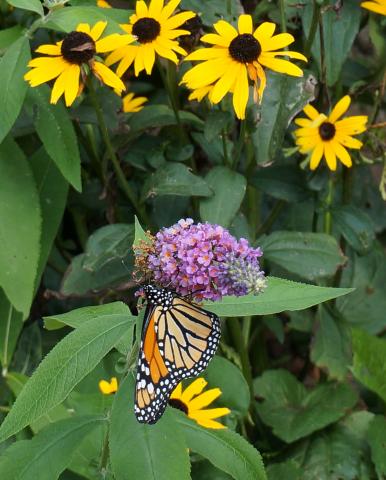
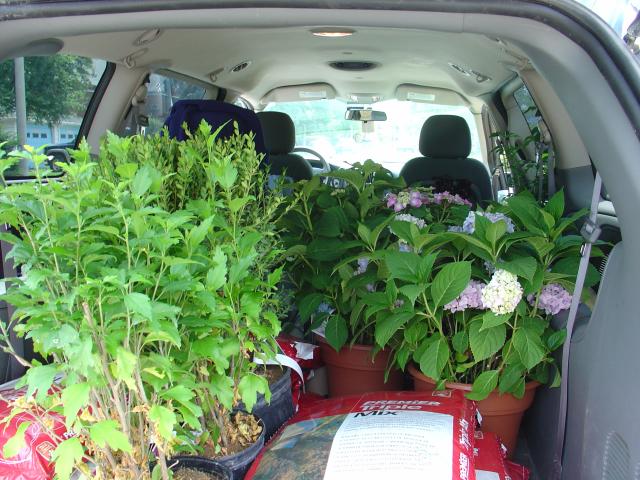
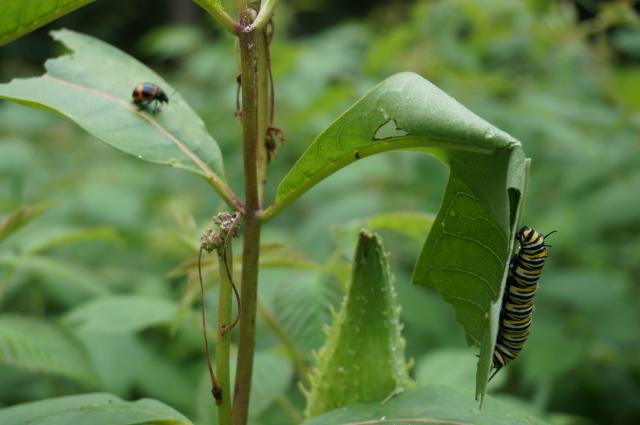
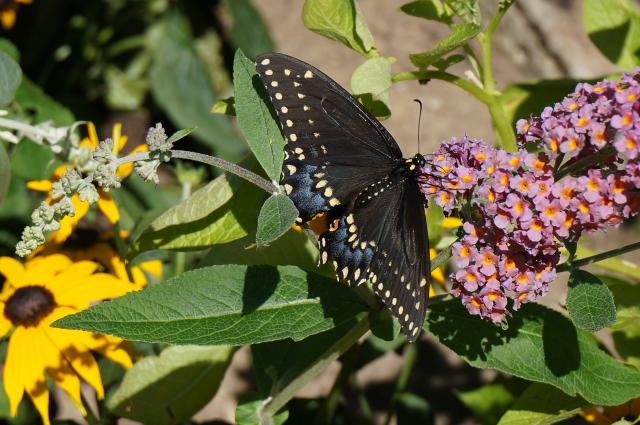
PLANTING
Left photo, heading out to a customer's garden to do some planting! Purchase your own plants or ask me to shop for the healthiest, most suitable plants at the best possible prices.
Below: Butterfly bush and other perennials were planted in this Toronto garden and attracted some beautiful butterflies including Monarchs and Black Swallowtails.
Bottom: Planting milkweed in urban gardens has become more popular with increased awareness of its essential role in the Monarch butterfly life cycle. The milkweed shown was grown in my Muskoka garden which was started with several plants and has now grown to a sizable patch. Transplanting is best done earlier in the season before the plants become large. Milkweeds can also be started from seed and do produce attractive flowers which will attract adult butterflies and other interesting insects. The plants in the photos are home to several Monarch caterpillars.
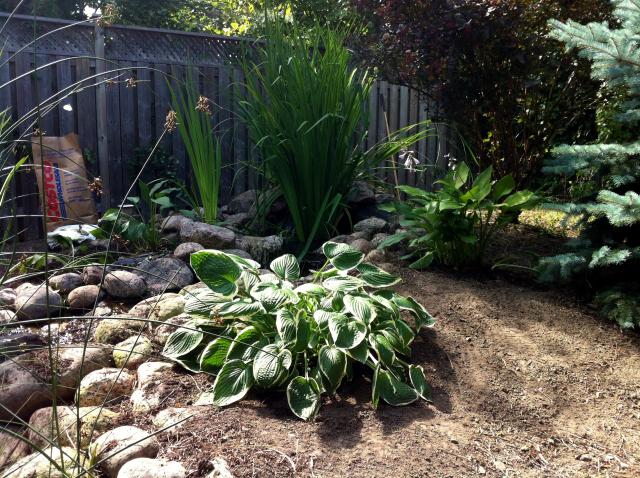
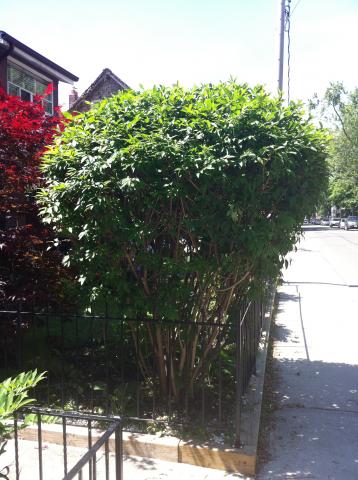
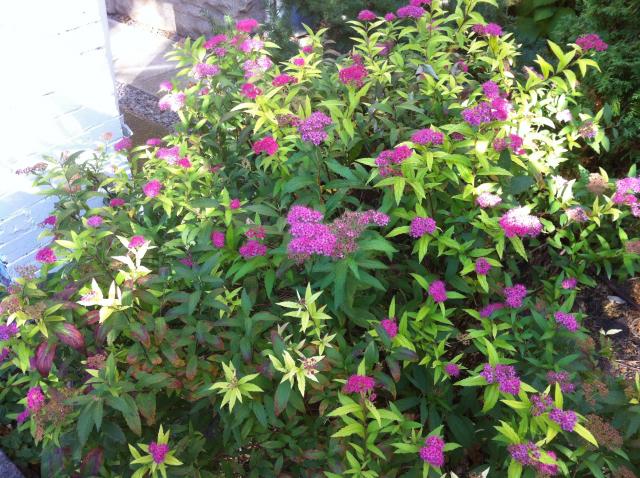
Because of its sheltered location and unusually warm Fall weather, this Spirea bloomed beautifully until November.
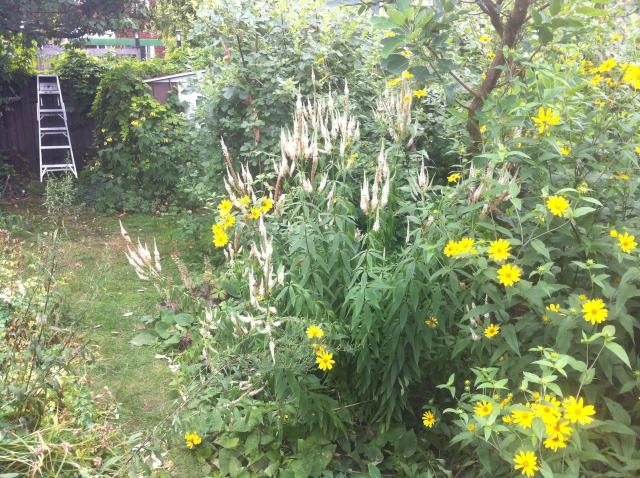
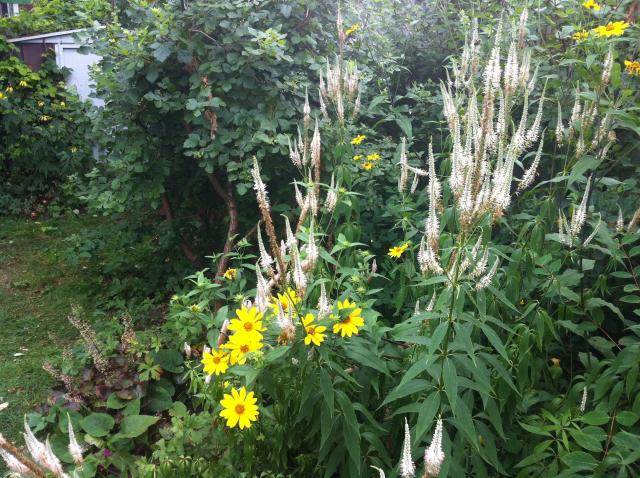
Somewhere near Danforth Ave. in east-end Toronto lies a magical garden that features many native plants including Culver's Root (photos below). This garden is frequently visited by a variety of birds and pollinators such as bees and butterflies. A natural paradise steps from one of the busiest roads in the city!
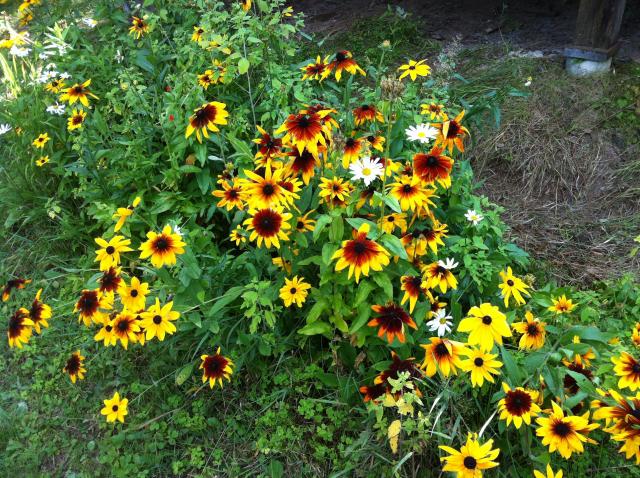
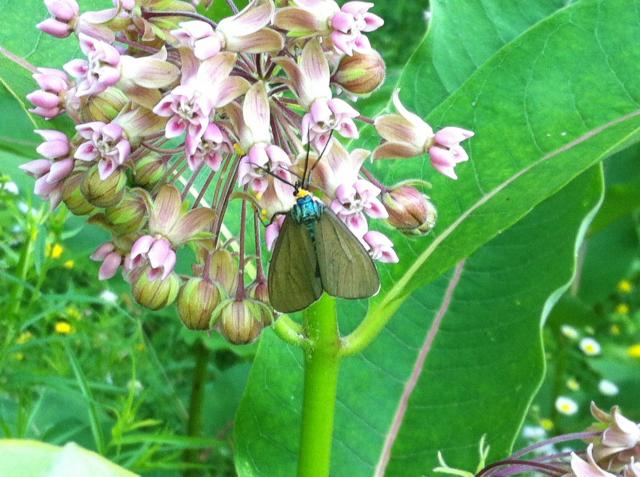
WEEDING
This backyard pond (at right) was well planted but totally overgrown with weeds including thousands of mints. After extensive weeding, additional plants such as hostas were added. Hostas do well in partial sun or shady areas and are somewhat helpful in discouraging new weeds from growing. The finally stage of this project was to mulch or plant grass seed where needed.
Below left: This Scarborough Road garden was completely over-run by weeds. When removed, the remaining plants were a great start to a renewed garden.
Below right: A Beaches garden was completely weed-infested including stubborn invasives such as strangling dog vine and Japanese knotweed. A painstaking removal was followed by a generous application of cedar mulch to help keep the weeds at bay.
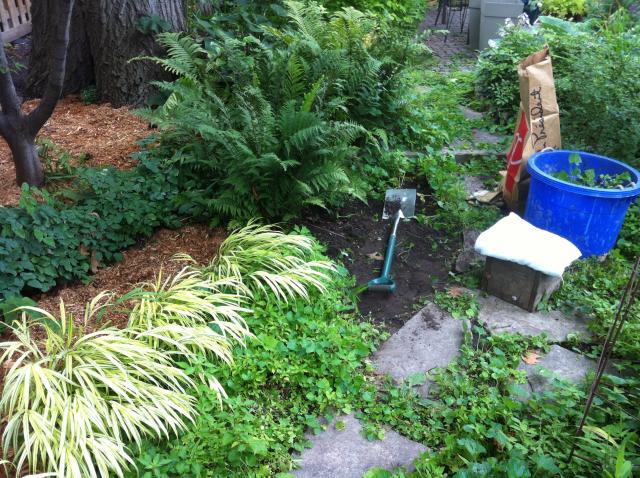
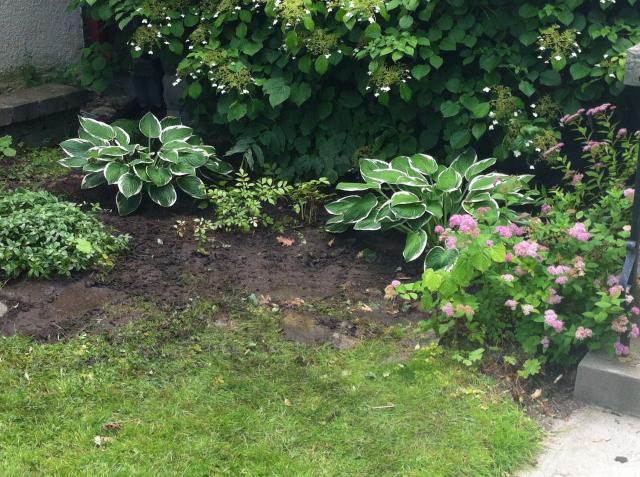
RAISED FLOWER BEDS: A simple, sturdy and attractive raised bed built in less than a day. Step 1, lumber and supplies were picked up early morning, paying particular attention to purchasing straight and sound 4x4 timbers. Step 2, previous garden structure was dismantled, saving soil and plants on a tarp to protect lawn and walkway. Step 3 (photo below left), the first level of the structure is created paying close attention to levelness and squareness. Step 4 (photo below middle), additional triple mix soil and cedar mulch picked up. Step 5 etc. (photo below right), raised bed structure completed, filled with soil, replanted and mulched.
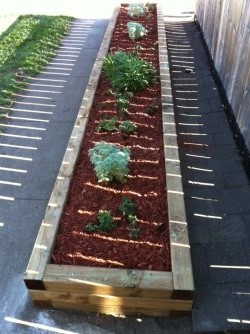
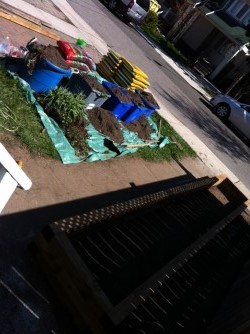
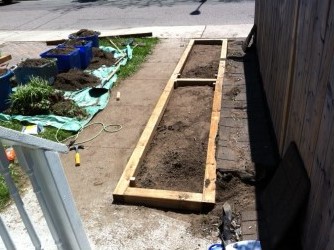
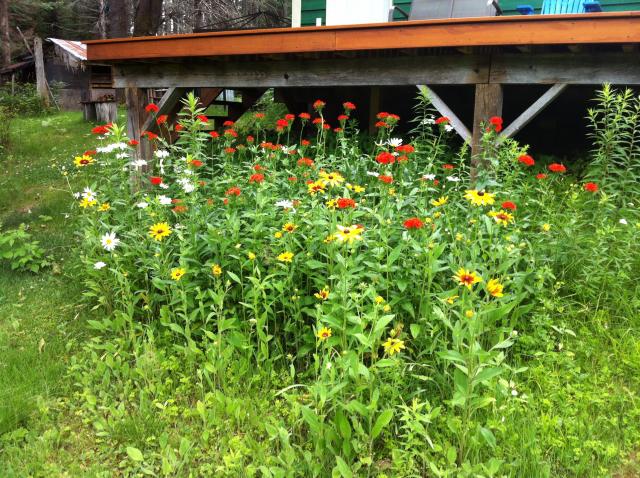
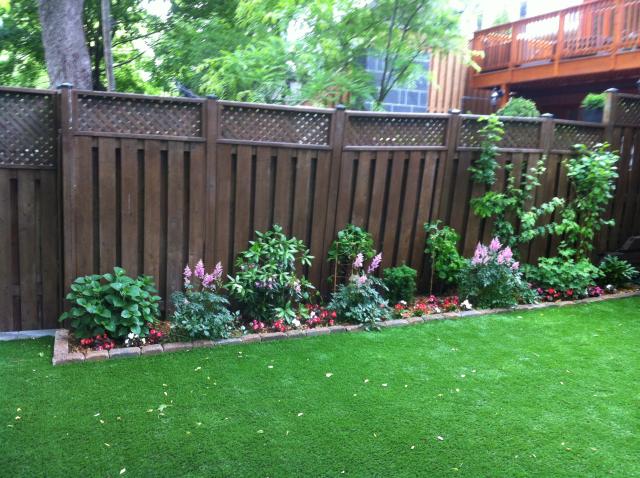
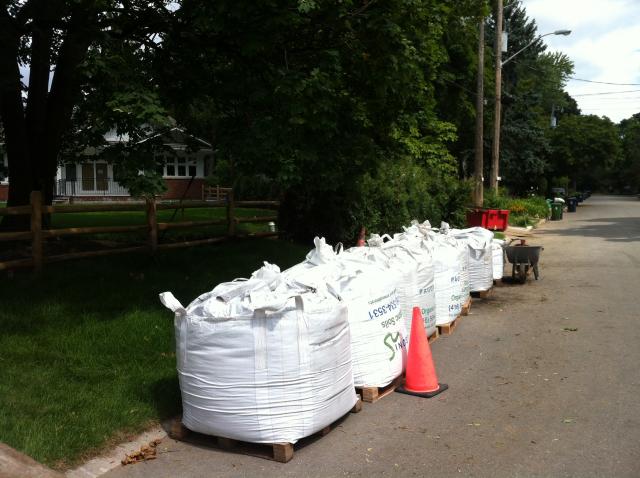
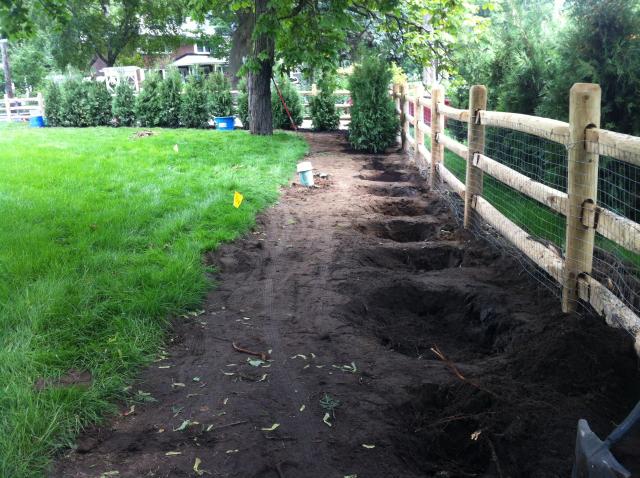
Left: Recently planted astilbe and other shade-favouring plants. The entire bed area was excavated to approximately 20'' and filled with premium soil with worm castings.
Below: A major estate planting project that included over 50 seven-foot cedars and hundreds of other plants. Soil upgrades included approximately 20 cubic yards of premium top soil with worm castings.
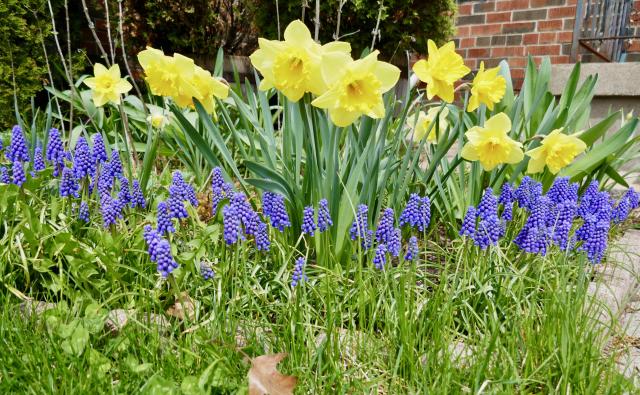
At left: Daffodils and Grape Hyacinths grown from bulbs make for a beautiful Springtime garden display.